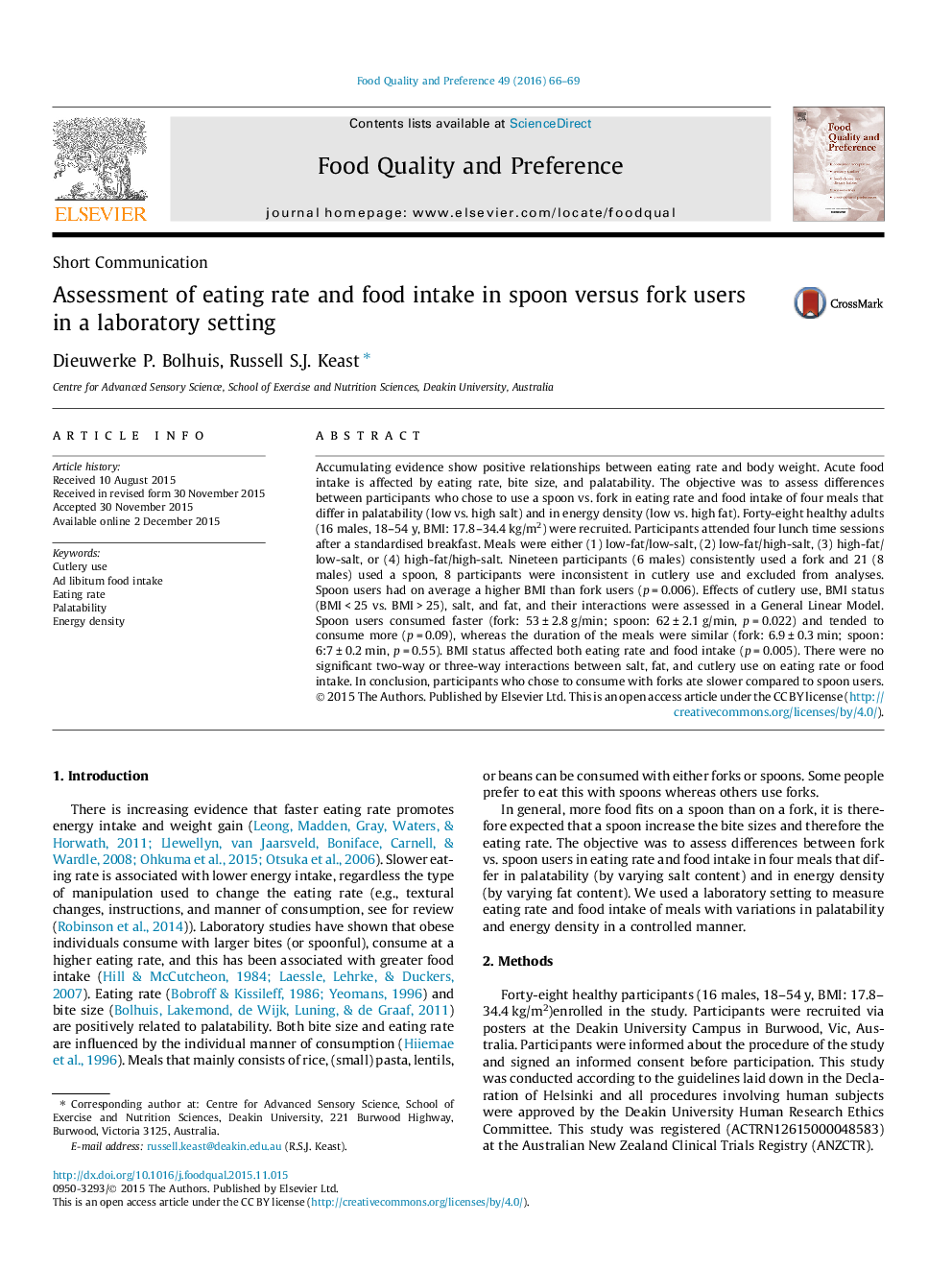| کد مقاله | کد نشریه | سال انتشار | مقاله انگلیسی | نسخه تمام متن |
|---|---|---|---|---|
| 6261250 | 1613150 | 2016 | 4 صفحه PDF | دانلود رایگان |
- We investigated food intake in individuals consuming with forks vs. spoons.
- Fork users consumed slower and tended to consume less than spoon users.
- Spoon users had a higher BMI than fork users.
- Both body weight status and type of cutlery used affect eating rate independently.
Accumulating evidence show positive relationships between eating rate and body weight. Acute food intake is affected by eating rate, bite size, and palatability. The objective was to assess differences between participants who chose to use a spoon vs. fork in eating rate and food intake of four meals that differ in palatability (low vs. high salt) and in energy density (low vs. high fat). Forty-eight healthy adults (16 males, 18-54 y, BMI: 17.8-34.4 kg/m2) were recruited. Participants attended four lunch time sessions after a standardised breakfast. Meals were either (1) low-fat/low-salt, (2) low-fat/high-salt, (3) high-fat/low-salt, or (4) high-fat/high-salt. Nineteen participants (6 males) consistently used a fork and 21 (8 males) used a spoon, 8 participants were inconsistent in cutlery use and excluded from analyses. Spoon users had on average a higher BMI than fork users (p = 0.006). Effects of cutlery use, BMI status (BMI < 25 vs. BMI > 25), salt, and fat, and their interactions were assessed in a General Linear Model. Spoon users consumed faster (fork: 53 ± 2.8 g/min; spoon: 62 ± 2.1 g/min, p = 0.022) and tended to consume more (p = 0.09), whereas the duration of the meals were similar (fork: 6.9 ± 0.3 min; spoon: 6:7 ± 0.2 min, p = 0.55). BMI status affected both eating rate and food intake (p = 0.005). There were no significant two-way or three-way interactions between salt, fat, and cutlery use on eating rate or food intake. In conclusion, participants who chose to consume with forks ate slower compared to spoon users.
Journal: Food Quality and Preference - Volume 49, April 2016, Pages 66-69
